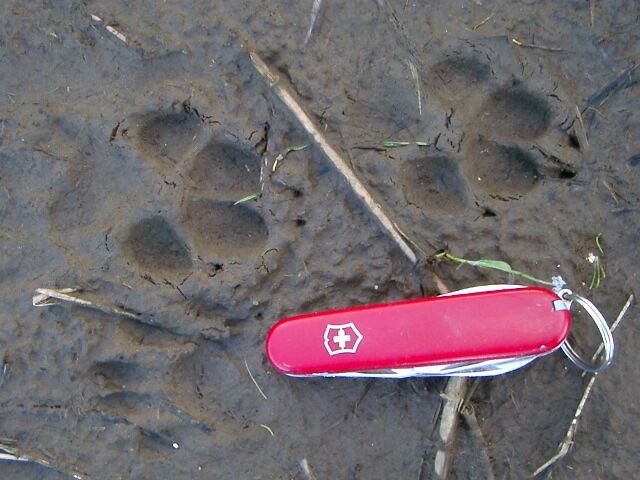
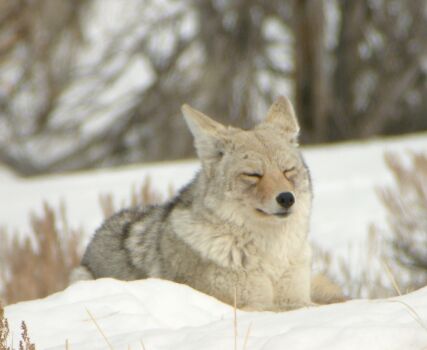
The coyote (Canis latrans) is a very adaptable canine, thriving in most habitats. However, I have found them surpisingly absent from some specific areas for no apparent reason.
You should scrutinize coyote tracks to distinguish them from dogs and other wild canines. The gait, scat, den, and location can be helpful clues. In the winter the tracks can be seen in the snow at fairly high elevations despite the fact that the climate is relatively mild here year around at lower elevations.
I have tried to obtain photos of tracks under different conditions to capture differences in the way the track looks such as the amount of splay when trotting on soft mud.
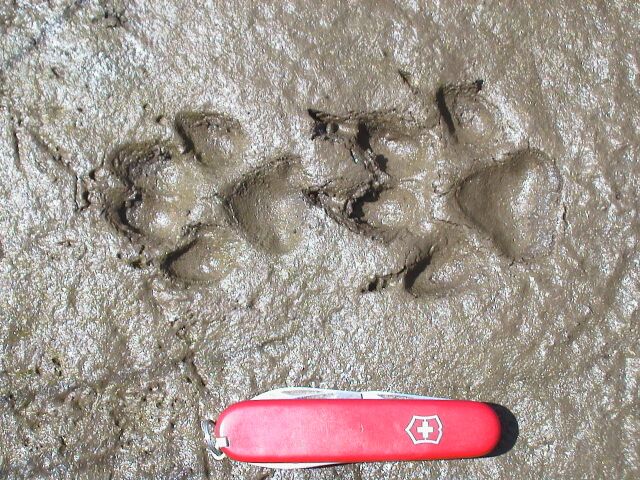

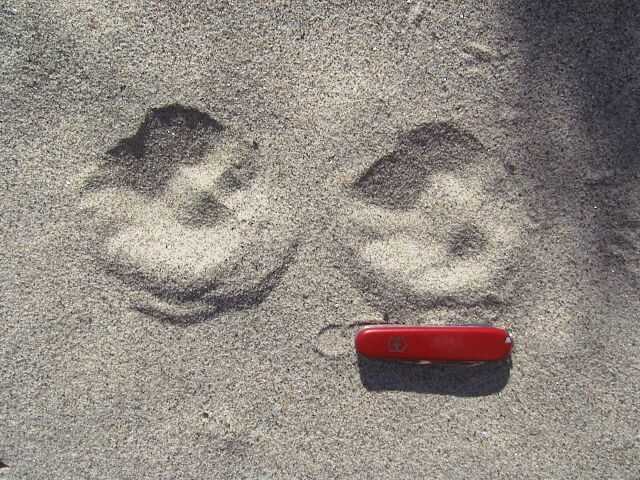
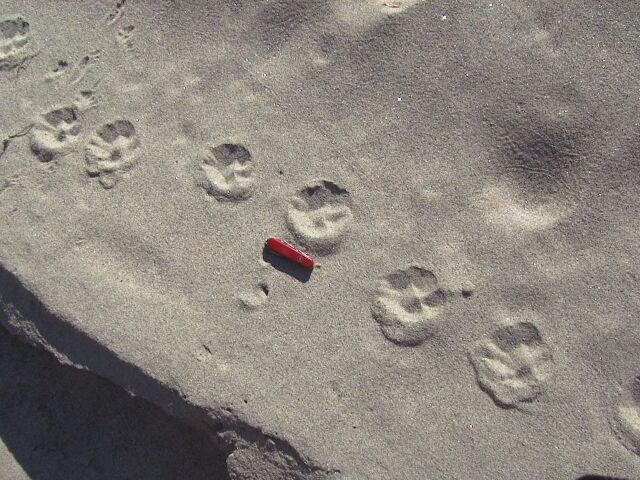
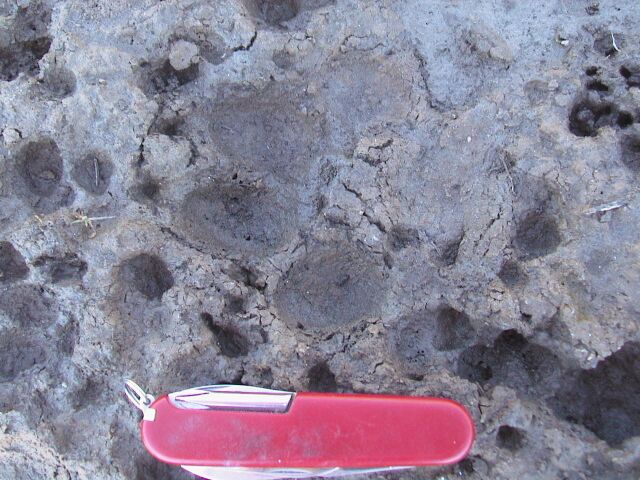
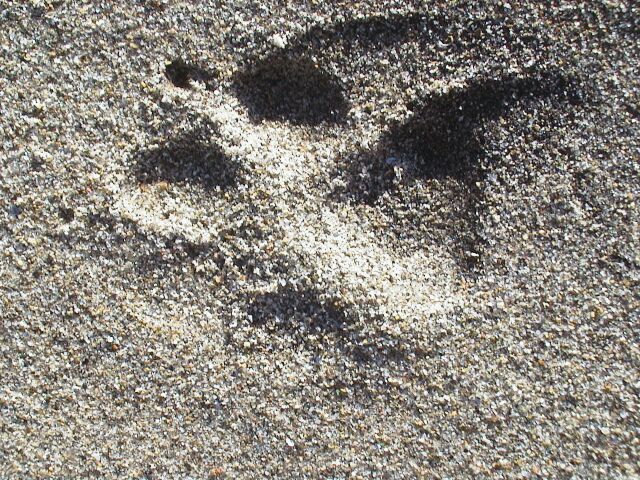
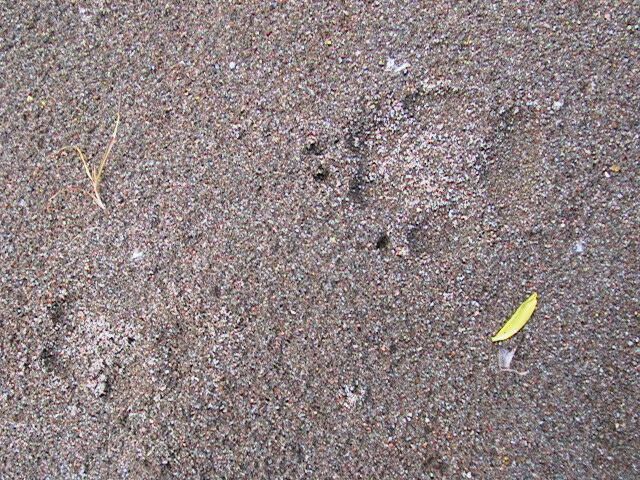
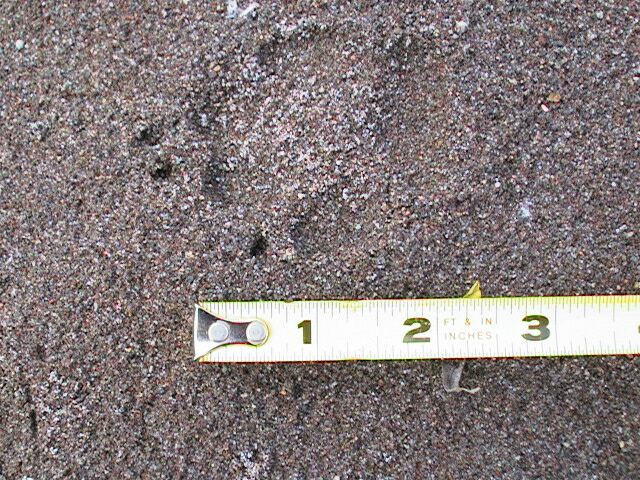
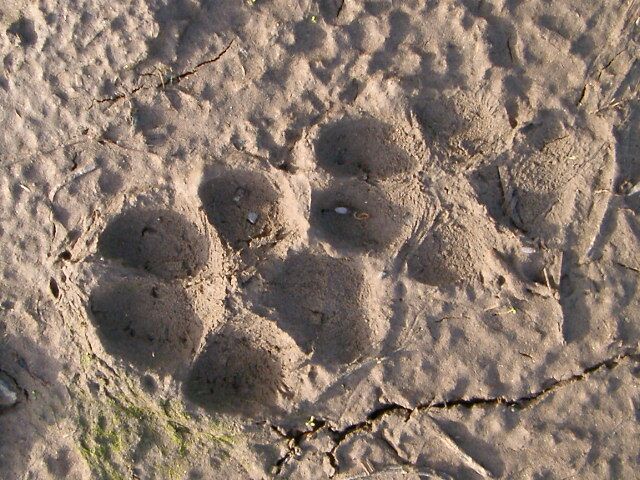
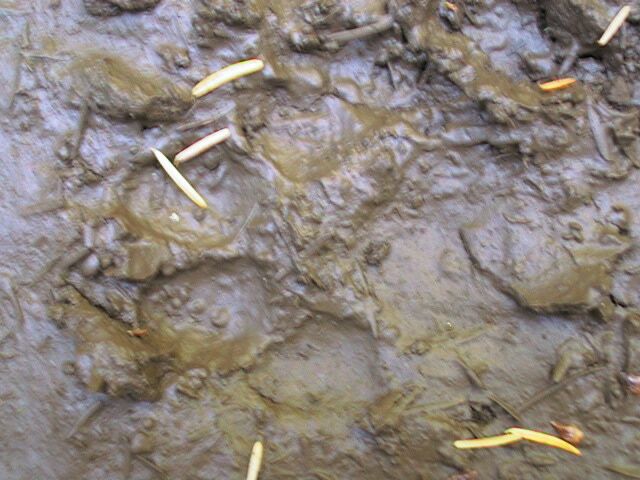
Below we have a fast walk, with the hind foot oversteping the front foot. As with the red fox, the coyote often trots. In this photo, the hind foot has overstepped the
front foot indicating a fast trot. As with other canines, the coyote will often use a side trot. As he turns his head
to the left or right, the hind feet swing to the opposide side of the front feet. Here we see variations on a lope (slow gallop with F H F H diagonal pattern). Other gallops are not uncommon. Here is a rotagallop. Tracks in the snow are often ill-defined but look for the oval shape, prominent claws on
toes 3 and 4, and a gait confirming a wild canid. Here is a pair of coyotes that I followed for some ways. They would hunt in parallel trajectories
and then come together in exposed areas.
The coyote appear to have stopped to sprayed this little tree.
While mapping the sinuosity of coyote trails in Yellowstone during March, I stumbled on this coyote den.
There was fresh dirt kicked out and fresh tracks leading in and out of the den. Here is a track from "old clubfoot", a coyote with a deformed foot that Jim Halfpenny has been
following for some time in the area around Beaver Lake. The tracks are distinctive. In gallops,
little weight is placed on the deformed foot so the gait appears three legged. Near Slough Creek in Yellowstone I watched a coyote jump up from its day bed on a hill overlooking
the valley. It started to nervously walk away but then launched into a high speed gallop with
a second coyote close on its heels. Eventually the two connected and thrashed about in the
sagebrush. The aggressor was clearly the smaller of the two. Then another chase ensued,
followed by fighting and ritualized submissive behavior not unlike that displayed by wolves.
Because there were several coyote packs active in that area I wondered if this was a inter-pack
battle over territory but I cannot rule out a dominance display within a pack. I followed their
trail for a quarter mile or so. Several parts reflected a full out gallop. Such social behavior within and between packs highlights the behavioral, as well as genetic,
similarities between wolf and coyote. A study of the coyote packs in the area around Slough Creek
before wolf reintroduction revealed several packs with well-defined and defended territories,
alpha pair dominance hierarchies, and even some pack hunting of deer and elk. Gait
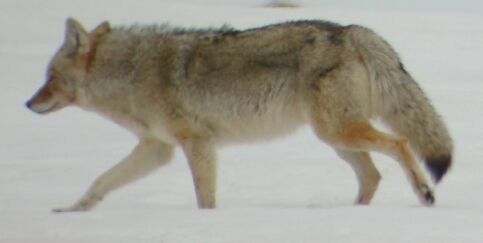

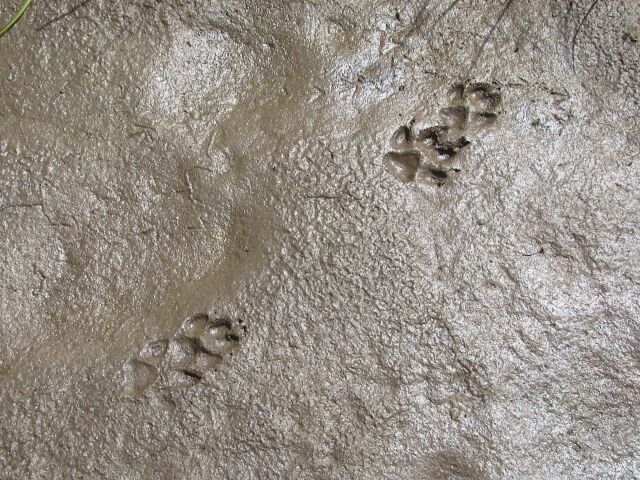
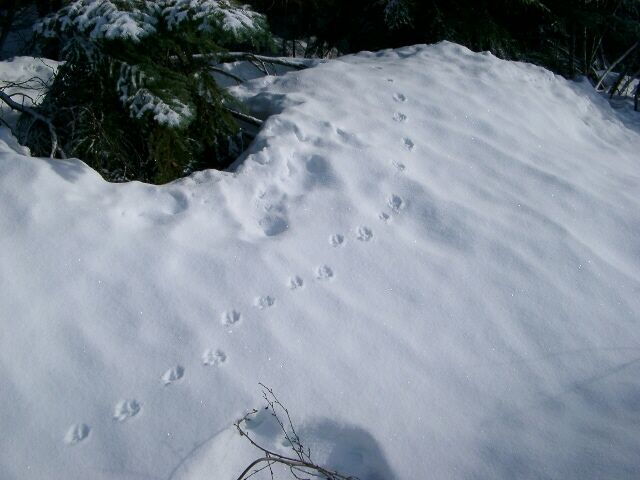
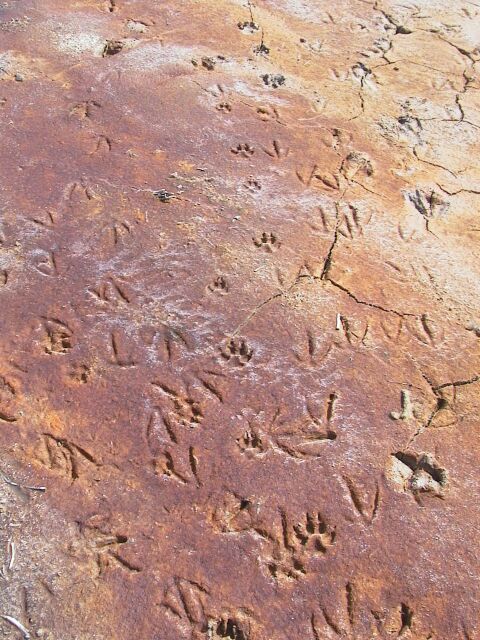
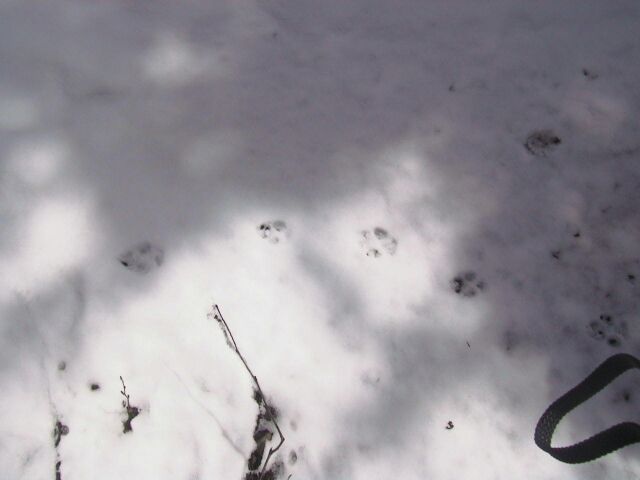
Snow
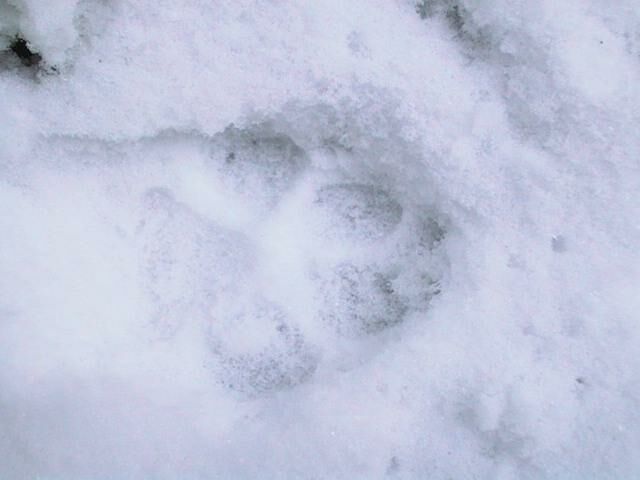
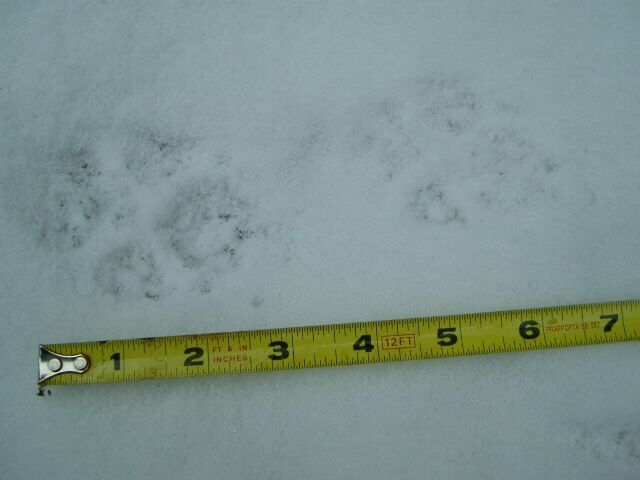
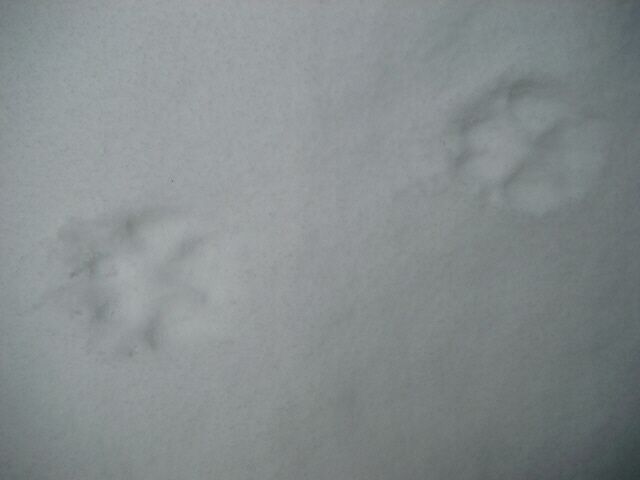
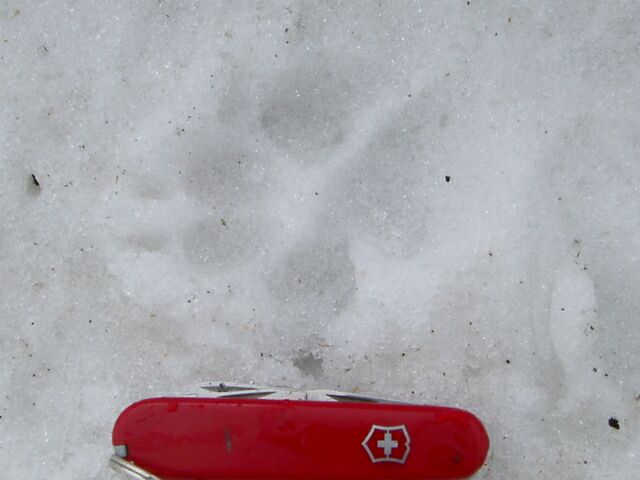
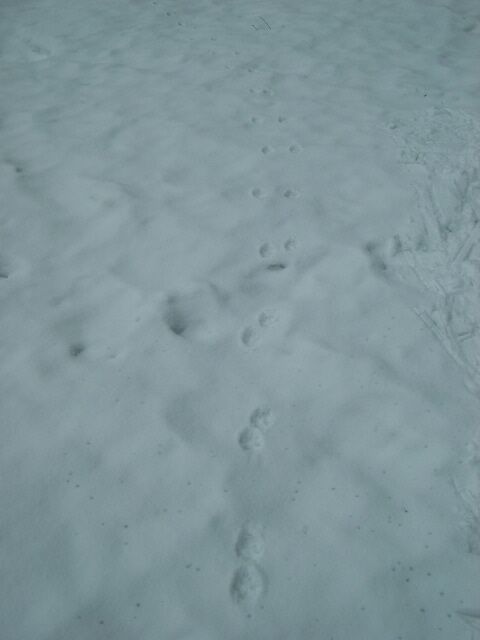
Scat
Coyotes often leave scats over and over in the same location, known as a "post office." The scat is
often in an exposed place, probably to make sure other coyotes get the message. This rock was in
the middle of a gravel road. 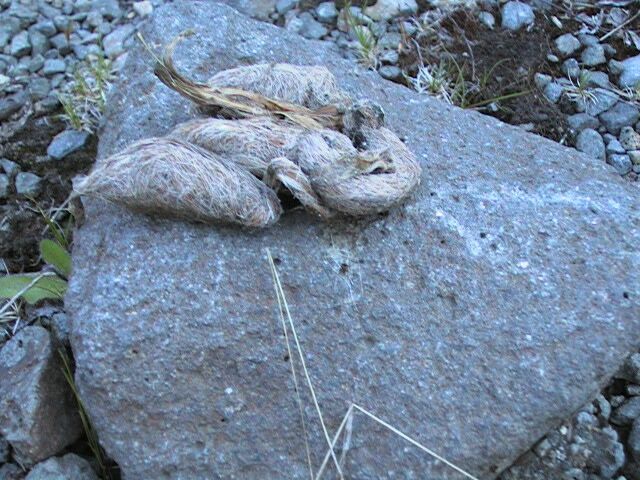
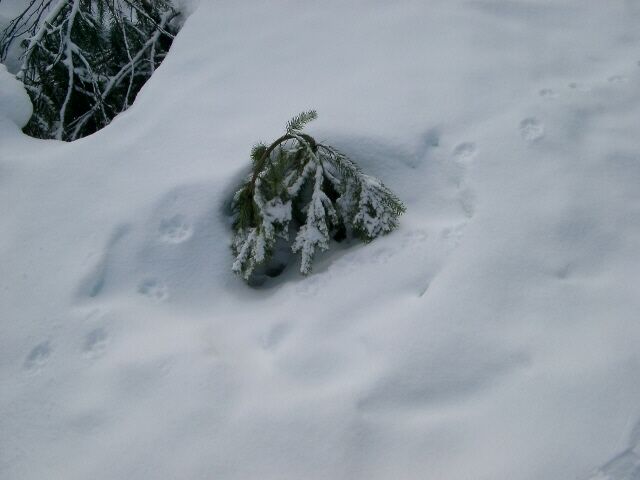
Den
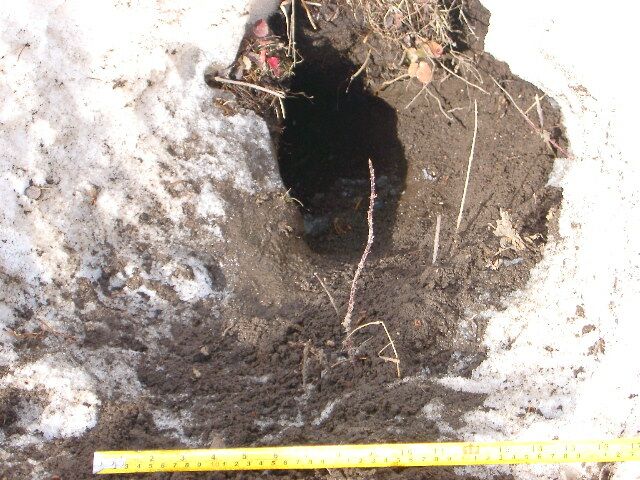
Skull

Stories
Clubfoot
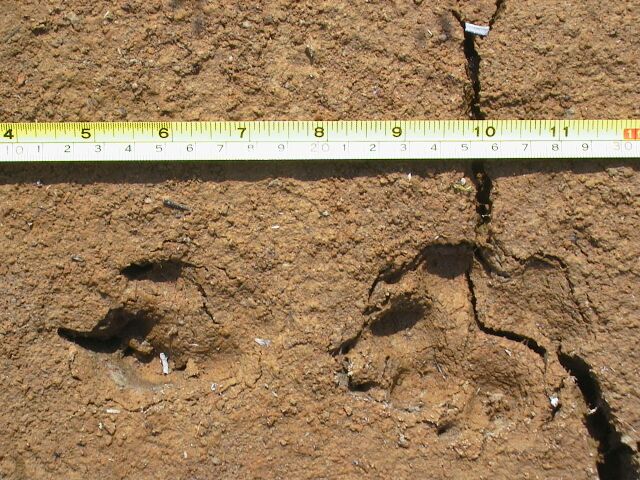
The Chase

